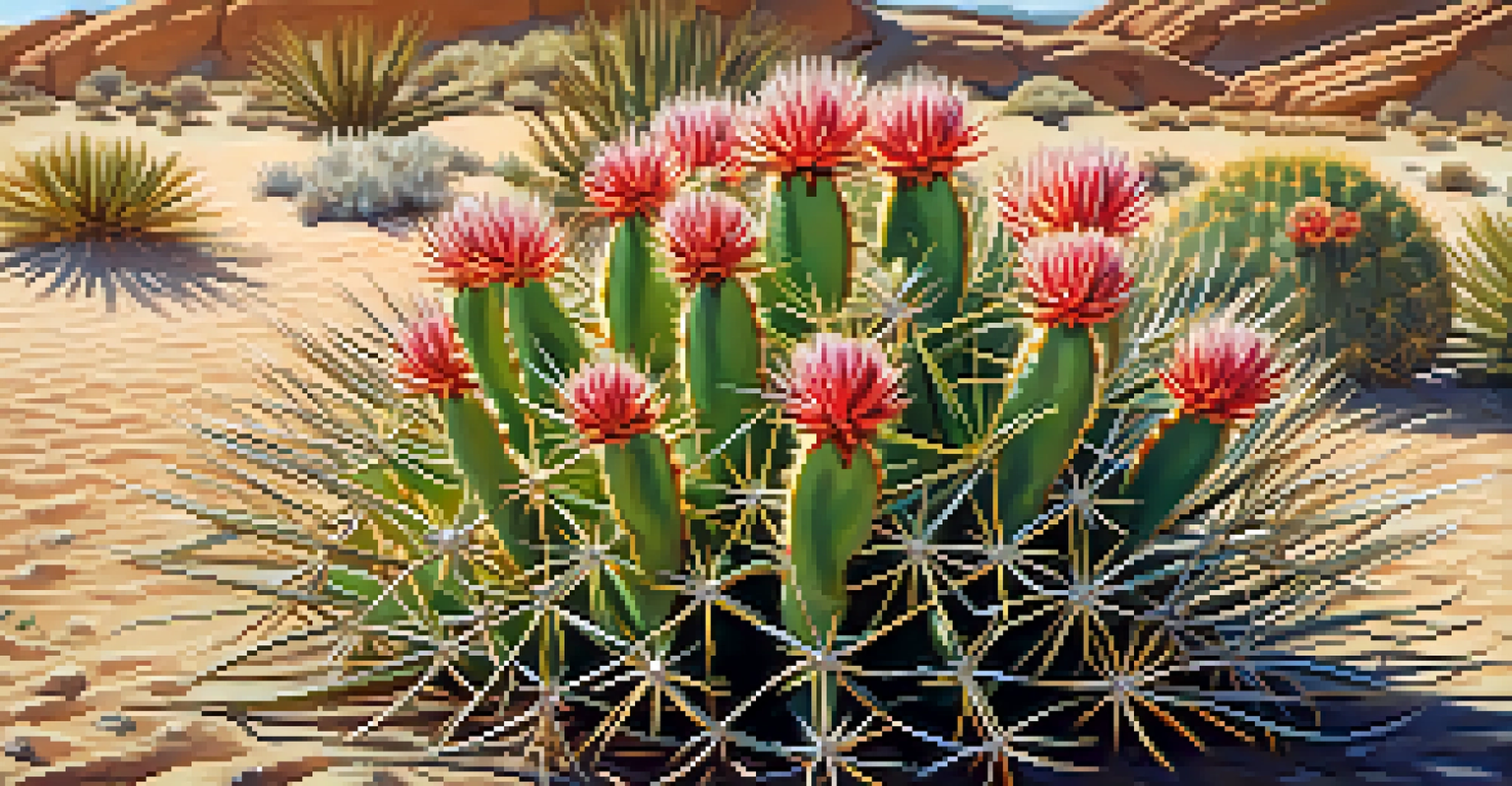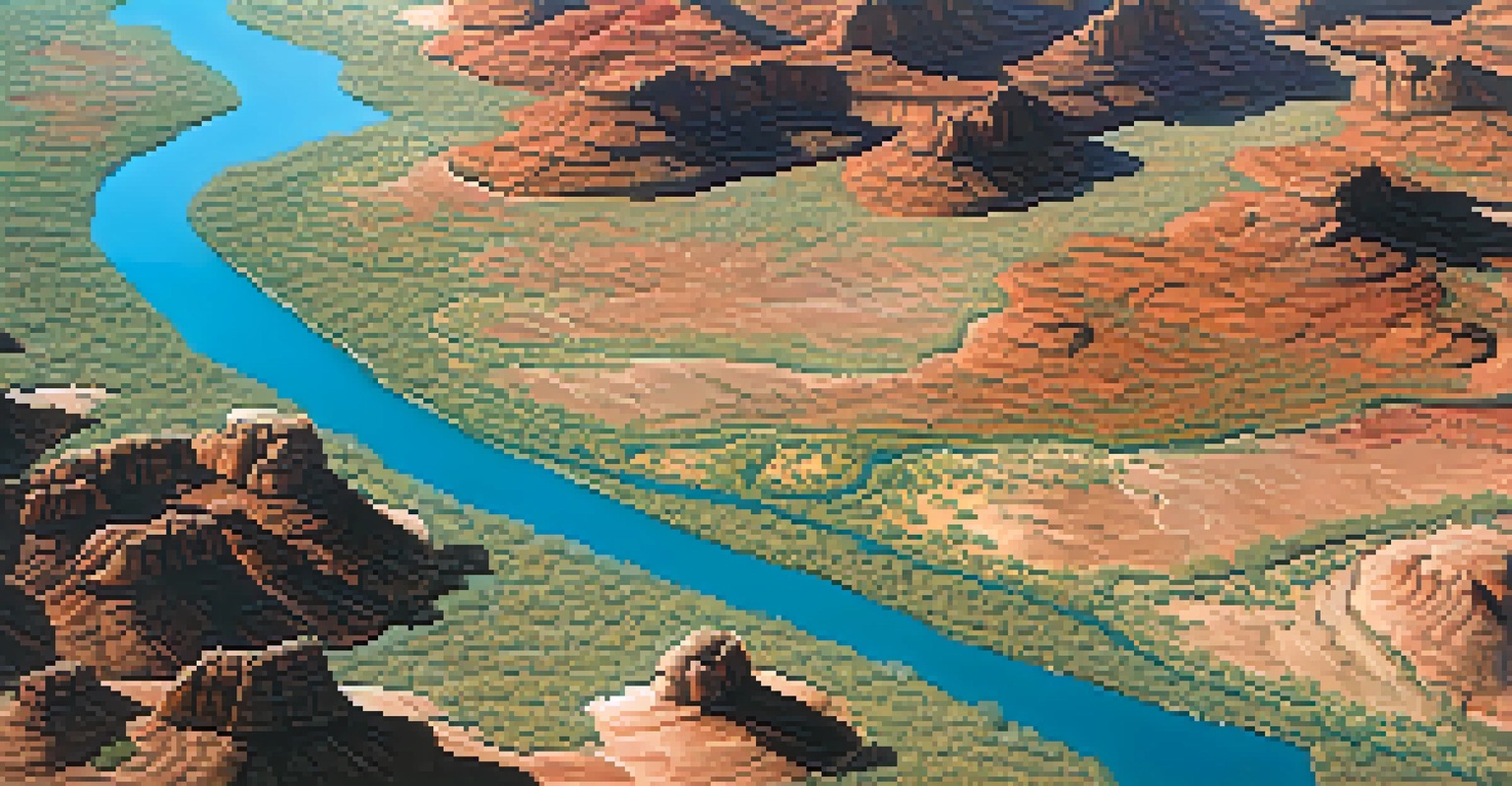Climate Change Effects on Utah's Desert Environment

Understanding Utah's Unique Desert Landscape
Utah's deserts are characterized by stunning landscapes, including red rock formations and vast sandy plains. These ecosystems play a crucial role in the state’s biodiversity, hosting a variety of plant and animal species that have adapted to extreme conditions. The unique climate, marked by low rainfall and high temperatures, has shaped these environments over millennia.
The Earth does not belong to us: we belong to the Earth.
However, the delicate balance of this ecosystem is beginning to shift due to climate change. Increased temperatures and changing precipitation patterns threaten the survival of native species and the overall health of these desert landscapes. As the climate warms, the effects on Utah's desert environment become increasingly pronounced.
Understanding the intricacies of Utah's desert ecosystem is essential for grasping the broader implications of climate change. From the iconic red rocks of Arches National Park to the diverse flora and fauna, these landscapes are not just beautiful; they are also vital to the ecological health of the region.
Rising Temperatures and Their Impacts
One of the most evident effects of climate change in Utah is the rise in average temperatures. The state has experienced a significant increase in temperature over the past few decades, leading to hotter summers and milder winters. This shift can have a domino effect on the desert environment, impacting everything from plant growth to animal behavior.

Higher temperatures can lead to increased evaporation rates, reducing the already limited water supply. For desert plants, this means they must adapt to survive in even drier conditions, which can be a significant challenge for species that are already at their limits. Consequently, some native plants may struggle to thrive, leading to shifts in the overall plant community.
Climate Change Threatens Desert Ecosystems
Rising temperatures and changing precipitation patterns are disrupting the delicate balance of Utah's unique desert landscapes.
Moreover, these rising temperatures can disrupt the life cycles of desert animals. Species that rely on specific temperature ranges for breeding or foraging may find it increasingly difficult to survive, potentially leading to declines in their populations. This change can alter the entire food web, impacting other species that depend on them.
Changing Precipitation Patterns
Climate change is also altering precipitation patterns across Utah's deserts. While some areas may experience heavier rainfall, others may face prolonged droughts, creating a patchwork of wet and dry regions. This unpredictability can stress the delicate desert ecosystem, making it harder for plants and animals to adapt.
In every walk with nature, one receives far more than he seeks.
For instance, increased rainfall can lead to more frequent flash floods, which can wash away topsoil and disrupt the habitats of various species. Conversely, extended periods of drought can lead to water shortages, affecting both the flora and fauna that rely on these resources. This inconsistency can create a challenging environment for survival.
Additionally, changing precipitation patterns can influence the timing of seasonal events, such as flowering and migration. If these natural cycles become misaligned, it could further threaten the delicate balance of Utah's desert ecosystems, leading to a cascade of ecological consequences.
Effects on Desert Flora
Utah's desert plants are uniquely adapted to thrive in harsh conditions, but climate change poses new challenges. As temperatures rise and water becomes scarcer, native species like sagebrush and various cacti may struggle to survive. This could lead to a shift in plant communities and the potential loss of biodiversity.
Some plants may also be forced to migrate to higher elevations or different areas where conditions are more favorable. This migration can be hindered by human development and other barriers, making it difficult for certain species to find suitable habitats. Consequently, some plants may face extinction if they cannot adapt quickly enough.
Impact on Flora and Fauna
Native plants and animals are struggling to adapt to the harsh conditions created by climate change, leading to potential declines in biodiversity.
Moreover, the loss of native plants can have ripple effects throughout the ecosystem. Plants provide essential food and shelter for many animal species, so their decline could threaten the survival of various wildlife, further disrupting the ecological balance of Utah's deserts.
Impact on Desert Fauna
Climate change does not only affect plants; it also poses significant threats to the animals that call Utah's deserts home. Rising temperatures and changing food availability can disrupt animal behavior, including feeding, breeding, and migration patterns. For example, species like the desert tortoise may find it increasingly challenging to locate food or suitable nesting sites.
As habitats shift and food sources become scarcer, some species may be forced to compete for resources, leading to increased stress and potential declines in populations. Predators may find it harder to catch prey, while herbivores may struggle to find adequate nutrition, creating a chain reaction throughout the food web.
In addition, certain species may be more vulnerable to climate change than others. For instance, specialized species that rely on specific habitats or food sources may face higher risks of extinction. Conservation efforts will be crucial to protect these vulnerable populations from the ongoing impacts of climate change.
Wildfires and Desert Ecosystems
Another significant concern arising from climate change is the increased frequency and intensity of wildfires in Utah's desert regions. Higher temperatures and drier conditions create an environment where wildfires can ignite more easily and spread rapidly. This not only threatens human communities but also has devastating effects on local wildlife and plant life.
Wildfires can obliterate vast areas of habitat, leaving animals with fewer places to live and diminishing the food available to them. After a fire, recovery can take years, during which time the ecosystem struggles to regain its balance. In some cases, invasive species may take root in the aftermath, further complicating recovery efforts.
Conservation Strategies Are Essential
Innovative conservation efforts, including wildlife corridors and community engagement, are crucial for enhancing the resilience of Utah's desert ecosystems.
Moreover, wildfires can alter soil composition and hydrology, leading to increased erosion and less water retention in the landscape. This can create a feedback loop where the environment becomes even more susceptible to future fires and less able to support its native flora and fauna.
Conservation Strategies for Desert Resilience
Addressing the impacts of climate change on Utah's deserts requires innovative conservation strategies. Land management agencies and conservation organizations are working together to create plans that enhance the resilience of these ecosystems. This includes restoring native plant communities and controlling invasive species that threaten local biodiversity.
One effective strategy is the establishment of wildlife corridors, which allow animals to migrate to more suitable habitats as conditions change. By creating safe passageways, these corridors can help maintain genetic diversity and support the survival of vulnerable species. This approach acknowledges that wildlife needs to adapt to a changing climate.

Moreover, educating the public about climate change and its effects on local ecosystems is crucial for garnering support for conservation efforts. Engaging communities in restoration projects and sustainable practices can help foster a sense of stewardship for Utah's unique desert environments, ensuring their protection for future generations.